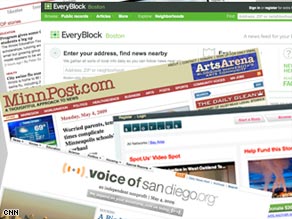News journalism is an ever-evolving profession which has been bolstered by the transmedia storytelling experience. News outlets worldwide have had to rethink their presence across the media in recent years, which has brought about an influx of news content being re-purposed in the forms of film, literature, television, radio and the internet. In order to understand how transmedia storytelling applies to news journalism, one must examine the ways news stories have been re-purposed to create a richer experience for consumers.
Prior to the influx of journalistic transmedia storytelling that came with the birth of the internet, the Watergate scandal of the 1970’s proved paramount in strengthening the news journalism industry. Hailed as one of the greatest journalistic feats of all time, the coup, which revealed President Nixon’s Republican administration had been involved in illegal activities, was initially investigated by The Washington Post (The Post) (Feldstein, 2004). Besides the additional coverage from other newspapers around the world, The Post’s investigative reporters, Carl Bernstein and Bob Woodward, went on to publish a book about the scandal called All the President’s Men in 1974. Similarly, the book was adapted into a movie by the same name in 1976 (Redford, 2010). As a result, one can see how transmedia storytelling allowed the story to be re-told and distributed through different means. Feldstein notes that “Watergate solidified the critical importance of investigative reporting…"All the President's Men" (the film) popularized and humanized investigative reporting…and provided the inspiration for thousands of young people to become investigative journalists who wanted to make a difference” (2004, p. 68). Hence, the power of transmedia storytelling led to the resignation of Nixon and a strengthened public image of news journalism.



More recently, the birth of the internet has enabled user-generated content (UGC) to flourish in news journalism, thus bolstering the industry. According to Harrison, “UGC journalists are now much more integrated into the newsgathering process, ensuring that UGC is being incorporated into newsroom operations” (n.d., p. 244). With this in mind, Harrison goes on to analyse how the British Broadcasting Corporation (BBC) uses UGC to their advantage (n.d.). He shows this through an example where British citizens flooded the BBC with content through blogs, emails and phone calls in regard to filling up their cars with contaminated petrol in 2007. Without the influx of UGC, he says the BBC wouldn’t have been able to go up against the petrol suppliers and provide a new angle on the story (Harrison, n.d.). With regard to the diffusion of innovations, one can see how UGC has diffused in society to enable new methods of creating news journalism.
Furthermore, UGC has reinforced news journalism through synergy. Thurman points out that The Guardian website in the United Kingdom contains “[n]ews message board to which readers contributed 647,7984 messages or ‘posts’ between 1999–2005.” (2008, p. 140). Similarly, he notes the South Korean newspaper website OhmyNews.com as having “more than 37,000 registered contributors, and is expanding into the English and Japanese language markets” (2008, p. 140). While news outlets are continually trying to find a way to efficiently commercialise such sites, Thurman found that in some instances, message boards were driving up to 50 per cent of news web sites' traffic (2008). Here one can see evidence of convergence, whereby once separate platforms, such as blogs and message boards, have been incorporated into news websites to create a richer experience.

In addition to convergence of media platforms, transmedia storytelling in news journalism fosters the concept of technoculture. In order to create a richer experience for the user, news web sites enable communication between readers and journalists through commenting and live chat feastures. In particular, Hane uses the example of hyperlocal news web sites, whereby journalists and citizen journalists write stories which can be localised down to specific neighbourhoods (2009). Similarly, Fanselow identifies community blogs as an indication of technoculture’s existence within news journalism, where content generated by news outlets allows local communities to debate local issues (2008). Hence the link between technoculture and transmedia storytelling becomes intertwined and subsequently strenghtens the news journalism experience.

Transmedia storytelling suggests that stories can be re-purposed for different media at different stages, thus reinforcing the news journalism industry. This is evidenced by the Watergate scandal, the use of UGC by news outlets, the convergence of UGC and news outlets and the emergence of technoculture through new media platforms. Consequently, one can expect future success of transmedia storytelling in news journalism.
References
Fanselow, J. (2008). Community blogging: The new wave of citizen journalism. National Civic Review, 97(4), 24.
Feldstein, M. (2004). Watergate Revisited. American Journalism Review, 26(4), 60-68.
Hane, P. J. (2009). Hyperlocal News, Ebook Readers, and Search Engines Top the News. Information Today, 26(10), 7.
Harrison, J. (n.d.) USER-GENERATED CONTENT AND GATEKEEPING AT THE BBC HUB. Journalism Studies, 11(2), 243-256.
Redford, R. (2010). Encyclopædia Britannica Online. 19 Oct. 2010 <http://www.britannica.com/EBchecked/topic/707221/Robert-Redford>.
Thurman, N. (2008). Forums for citizen journalists? Adoption of user generated content initiatives by online news media. New Media & Society, 10(1), 139-157.


No comments:
Post a Comment